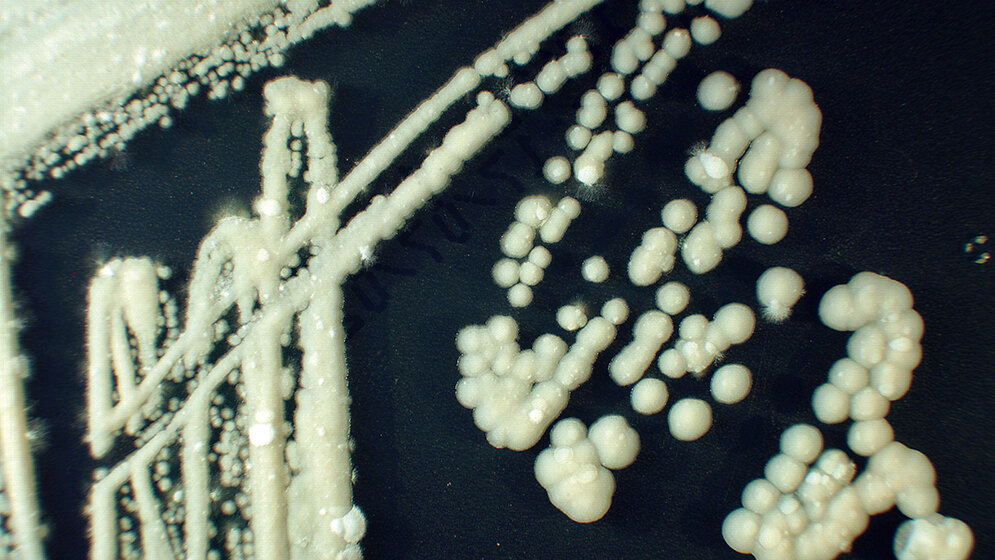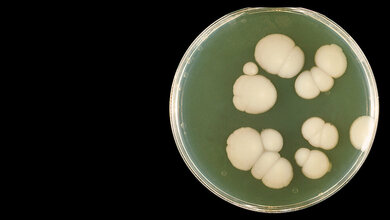Die Rolle der Sprosspilze in der Medizin (Teil III)
Zusammenfassung
Die wichtigsten Vertreter dieser Gruppe sind Cryptococcus spp., Trichosporon spp., Rhodotorula spp. und Malassezia spp. Sie sind typische Opportunisten, die bei günstiger Gelegenheit, zum Beispiel Abwehrschwäche, eine Erkrankung erzeugen. Kryptokokken, deren Sporen (Konidien) inhaliert werden, befallen häufig das ZNS (Meningitis, Enzephalitis). Eine dicke Kapsel schützt diese Sprosspilze vor der Abwehr des infizierten Menschen. Trichosporon spp. wachsen langsam auf den angebotenen Nährmedien, zum Beispiel auf dem Pilznährboden Sabouraud-Agar, und bilden mit der Zeit Pilzfäden aus, die dann in Arthrokonidien zerfallen. Die Kolonien von Rhodotorula spp., die oft im Stuhl vorkommen, sind wegen ihrer rötlichen Färbung, bedingt durch Karotinoide, auffällig. Außerdem enthalten sie große Mengen an Fettsäuren. Malassezia spp. besiedeln den Darm und die Haut vieler Menschen und können manchmal die Kleienflechte (Pytiriasis versicolor) hervorrufen. Sie sind nur schwer anzuzüchten, weil sie eigentlich Öl benötigen, was in den üblichen Nährböden nicht enthalten ist.
Schlüsselwörter: Basidiomyzetische Sprosspilze, Cryptococcus spp., Trichosporon spp., Rhodotorula spp., Malasesszia spp.
Abstract
The most relevant members of this group are Cryptococcus spp., Trichosporon spp., Rhodotorula spp. and Malassezia spp.. They are typical opportunistic pathogens waiting for favorable conditions, for example immunosuppression, to induce diseases. The spores (conidia) of cryptococci are inhaled. The infection proceeds to the CNS (meningitis, encephalitis). A thick capsule protects the yeast from the host’s defence. Trichosporon spp. grow slowly on the offered media such as Sabouraud agar. By the time they produce filaments, which disintegrate into arthroconidia. The colonies from Rhodotorula, mostly isolated from stool specimen, attract attention because of their pink colour, which is due to carotinoids. By the way, they contain large quantities of fatty acids. Malassezia spp. colonize the gut and the skin of many individuals and sometimes induce Pytiriasis versicolor. Culture is hampered by the fact that they need oil which is not available in common media.
Keywords: Basidiomycota, Cryptococcus spp., Trichosporon spp., Rhodotorula spp., Malasesszia spp.
DOI: 10.3238/MTADIALOG.2020.0028
Entnommen aus MTA Dialog 1/2020
Dann nutzen Sie jetzt unser Probe-Abonnement mit 3 Ausgaben zum Kennenlernpreis von € 19,90.
Jetzt Abonnent werden



